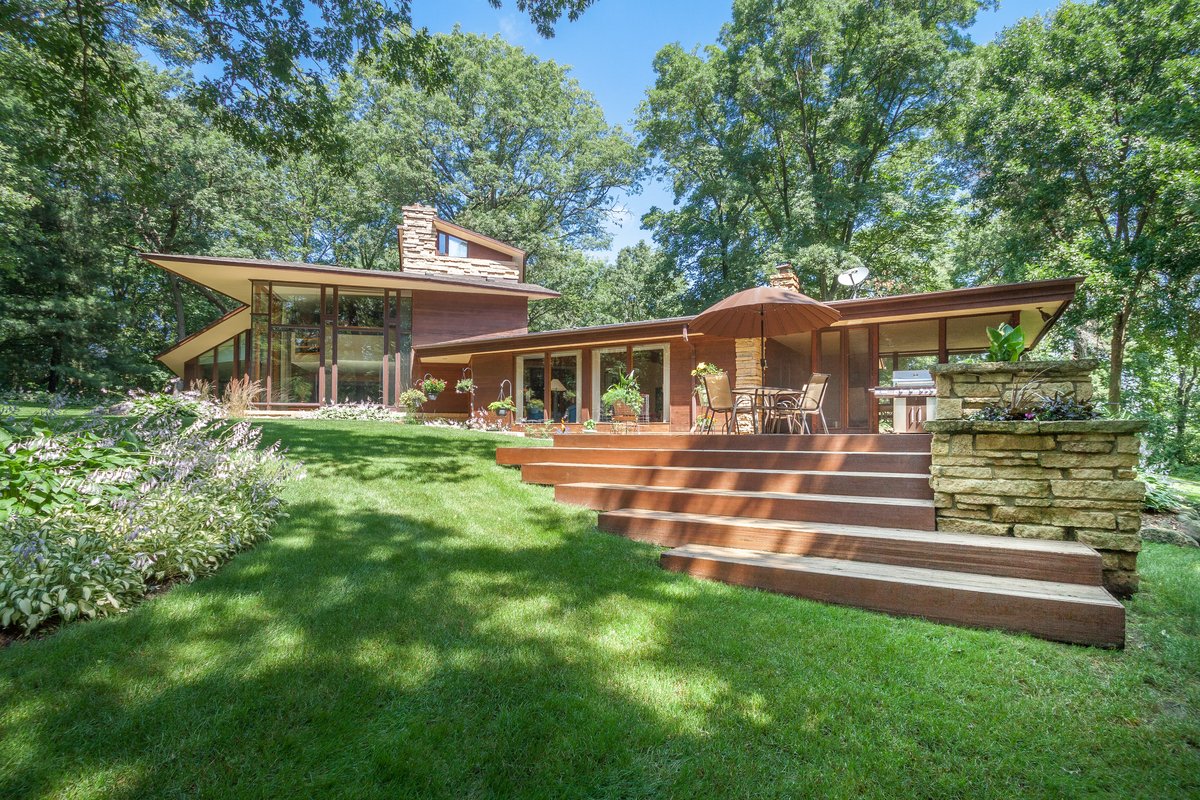#8533. Organic Façade: Wood and Stone Harmony in the Spirit of Frank Lloyd Wright
The building presented in the image is a striking example of organic architecture in the spirit of Frank Lloyd Wright, harmoniously integrated into the natural landscape. The house with its characteristic horizontal lines and low, spreading roofs demonstrates the core principles of the "Prairie style" developed by Wright in the early 20th century.
The façade features balanced asymmetry and emphasized horizontality — wide roof overhangs create a sense of merging with the surrounding space. The façade materials are authentic and natural: wooden cladding in a warm brown shade combines with stonework, enhancing the connection to the natural surroundings. Particularly expressive are the stone elements at the base of the staircase and the chimney, adding textural variety to the façade.
Panoramic glazing is a key design feature that blurs the boundaries between interior and exterior spaces. Large windows with characteristic geometric divisions provide maximum natural light and visual connection with the lush greenery around the house.
The open terrace with wooden decking and the wide staircase descending to the well-maintained lawn create a transitional zone connecting the architecture with the landscape — a technique frequently employed in organic architecture.
When designing your own façade in this style, it's worth paying attention to several key techniques: the use of natural materials (wood, stone), expressive horizontality, wide roof overhangs, thoughtful integration with the landscape, and varying terrace levels to create a smooth transition from the house to the natural surroundings.
